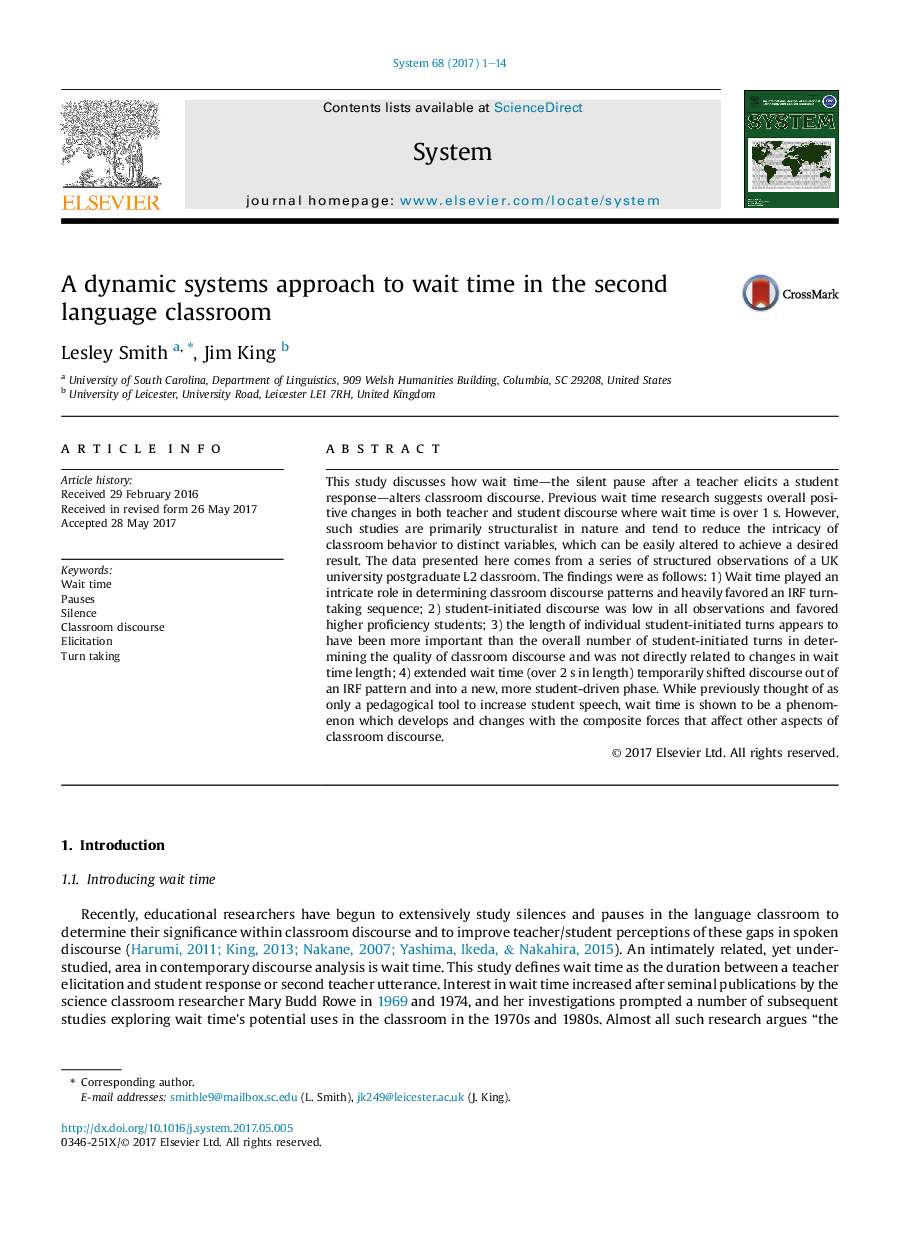| Article ID | Journal | Published Year | Pages | File Type |
|---|---|---|---|---|
| 4941319 | System | 2017 | 14 Pages |
Abstract
This study discusses how wait time-the silent pause after a teacher elicits a student response-alters classroom discourse. Previous wait time research suggests overall positive changes in both teacher and student discourse where wait time is over 1Â s. However, such studies are primarily structuralist in nature and tend to reduce the intricacy of classroom behavior to distinct variables, which can be easily altered to achieve a desired result. The data presented here comes from a series of structured observations of a UK university postgraduate L2 classroom. The findings were as follows: 1) Wait time played an intricate role in determining classroom discourse patterns and heavily favored an IRF turn-taking sequence; 2) student-initiated discourse was low in all observations and favored higher proficiency students; 3) the length of individual student-initiated turns appears to have been more important than the overall number of student-initiated turns in determining the quality of classroom discourse and was not directly related to changes in wait time length; 4) extended wait time (over 2Â s in length) temporarily shifted discourse out of an IRF pattern and into a new, more student-driven phase. While previously thought of as only a pedagogical tool to increase student speech, wait time is shown to be a phenomenon which develops and changes with the composite forces that affect other aspects of classroom discourse.
Related Topics
Social Sciences and Humanities
Arts and Humanities
Language and Linguistics
Authors
Lesley Smith, Jim King,
